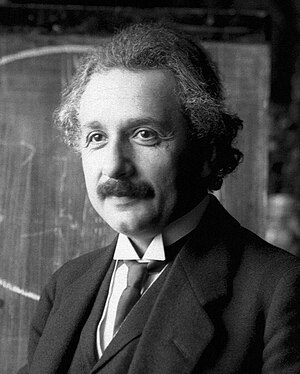While neither marketing nor social media are sciences, one needs to use scientific principles to be most effective when it comes to both branding and prospecting online. It doesn’t take an Einstein to succeed in social media marketing, but to does take a scientist. Are you rigorously collecting metrics and data to see if what you’re doing is resulting in sales conversions or extending your brand or are you relying on things you’ve learned from The Secret? Is your social media marketing campaign relying too much on magical realism, the power of positive thinking, and general superstition?
Or, are you so confident in your social media marketing plan that you really don’t care what your experiment says? That no matter how little pick-up you get in the media or no matter how few followers your garner or how little engagement and sharing results, it isn’t your fault but must be because the market’s not ready for you or because you knew that social media marketing wasn’t effective anyway.

Well, that’s just bad science, is what that is.
If you want to be an effective scientist, it is essential that you allow the results of your experiments — your observations — to speak for themselves. While having a hypothesis going into the lab is always part one, allowing the empirical data to realign or even contradict your initial predictions is essential. That said, it’s really very hard on the ego to see something fail. It’s even harder to take the data as it comes and turn it into something useful in the end. This is how innovation happens, of course; and this is how scientific breakthroughs happen, too: not incrementally, but in finding order in the chaos of unpredicted results.
There is a lot of bad science in social media marketing. Even a long decade after the Cluetrain Manifesto brought us the 95 theses that taught us that markets are conversations and that Brands don’t own their brands anymore — a hypothesis that has proven itself prophetic — there are still many brands that have adopted blogs and social networks simply as new broadcast channels and have simply used social media as a handy way of listening in on the rude thing that people are saying about them.
Science is about testing. Testing and retesting and being willing and able to cut lose any and all processes that prove ineffective and moving those resources into things that either work outright or show general promise. It is also about not being attached to outcome. Finally, it is also about sticking to your guns and powering through on your commitment to seeing your experiments and your tests through. There are too many ghost towns littering social media that are the direct result of abandoned experiments, abandoned dreams — actually, more often, they succumbed to a crisis of faith.
The advertising industry has already adopted science and testing, but not because they wanted to. These were no men who had faith in science, thinking that advertising was an art. While early online marketing started to make advertising nervous but it wasn’t until Google AdWords started turning the art of advertising into a science. The same thing is happening to direct marketing. From A/B testing to sophisticated engagement metrics, the science of advertising and marketing is becoming more de facto than fringe.
PR is the last bastion of The Secret, the last bastion of superstition and magical thinking. The last business communication vocation that struggles against the harsh accountability of hard science, the cruel nakedness of quantitative metrics over the soft fuzzies of qualitative metrics.
Just because you’ve adopted social media doesn’t mean you’re modern. It is strangely possible to map your 19th century PR strategies onto a 21st century media platform without missing a beat. Take responsibility for your campaigns and do not let your hunches and experience dictate your successes and failures — let the data inform you and when it informs you that you’re just spinning your wheels, it is essential to do whatever it takes to adjust your campaign to maximize performance, amplify influence, and optimize for conversions.
Everything else is just doing the same thing over and over again and expecting different results, a sure sign of insanity — or so said eminent scientist Albert Einstein.
Learn more about Chris Abraham at Gerris digital.




